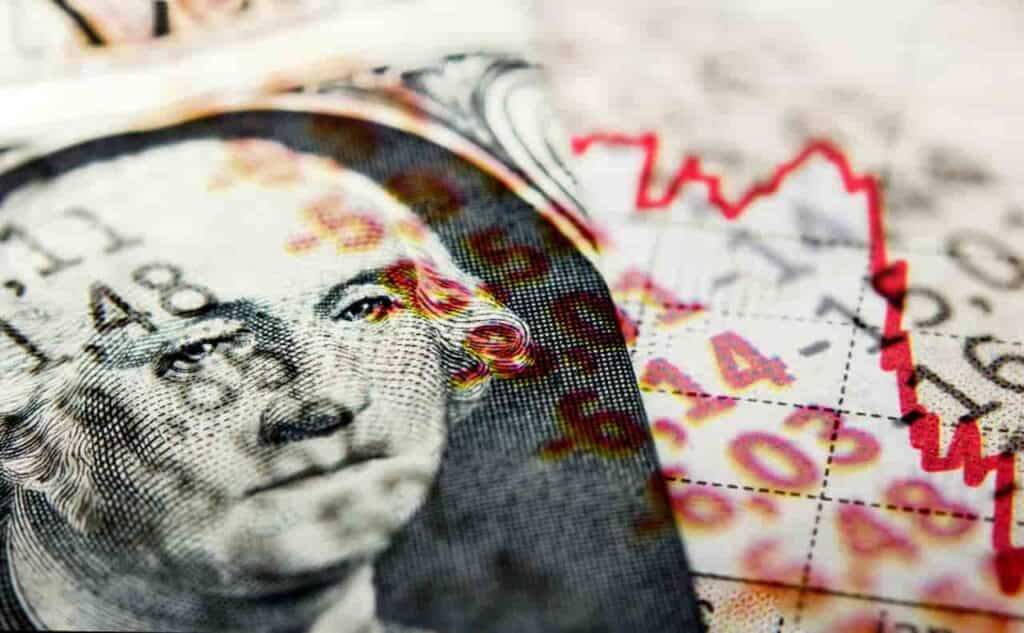February 21 has emerged as the worst day for the stock market in 2025 so far, after most equities recorded significant capital outflows, elevating concerns that a possible crash might be on the horizon.
Specifically, the market lost $900 billion in a single day, with major indices such as the S&P 500 leading the downturn.
A breakdown of the losses indicates that semiconductor giant Nvidia (NASDAQ: NVDA) plunged 4.05%, Microsoft (NASDAQ: MSFT) lost 1.90%, and Google parent Alphabet (NASDAQ: GOOGL) dropped 2.71%. Amazon (NASDAQ: AMZN) lost 2.83% of its market value.
Picks for you
Financial stocks also contributed to the rout, with banking giant JPMorgan Chase (NYSE: JPM) slipping 0.56% and Goldman Sachs (NYSE: GS) losing 1.02%.
The sell-off in consumer discretionary stocks was also notable, with Tesla (NASDAQ: TSLA) down 1.46% and Home Depot (NYSE: HD) dropping 2.87%.
UnitedHealth recorded another standout drop (NYSE: UNH), which fell 7% after the Department of Justice announced a civil fraud probe into the company’s Medicare billing.
S&P 500 erases all-time high gains
These losses have seemingly erased the S&P 500’s recent gains, which saw the index hit an all-time high of 6,146 on February 19. However, the benchmark index ended the last trading session down 1.7%, while on a weekly timeframe, it plunged 1.67%.
Economic concerns and policy uncertainty have driven the current market bearish sentiment. Investors seem rattled by rising prices triggered by President Donald Trump’s proposed tariffs, weak economic data, and inflation expectations.
Sustained selling pressure threat
Additionally, stocks could face further downward pressure as institutional investors adopt a cautious outlook.
In this case, data shared by financial market commentary platform The Kobeissi Letter in an X post on February 21 indicated a sharp decline in the funding spread for institutional investors, dropping nearly 50 basis points to its lowest level since August 2024.
The metric tracks institutional demand for long stock exposure via futures, options, and swaps. According to the data, the current lows were initiated after the Federal Reserve’s December 18 meeting, a time of heightened market uncertainty. The institution signaled a possible slowdown in implementing rate cuts at the time.
A similar rapid decline in funding spreads occurred in December 2021, before the 2022 bear market. The S&P 500’s pullback from recent highs raises further concerns about a possible broader downturn.
Therefore, if institutions remain cautious, stocks could face additional selling pressure. However, the market may stabilize if they start buying in the current dip.
Stock market 2025 resilience
Amid the uncertainties, the market has mostly demonstrated resilience in 2025, as evidenced by the S&P 500’s record high. Some players anticipate further growth above 6,500.
This resilience was built on investor optimism that surged in late 2024 following Trump’s election victory, as he was viewed favorably for stocks.
Conversely, investors remain on edge as concerns persist about the sustainability of momentum in leading sectors, particularly technology.
For instance, Nvidia, a top tech stock, is emerging from recent massive losses following the DeepSeek sell-off. This move sparked fears of a possible artificial intelligence bubble burst that could have spillover effects on the broader market.
Featured image via Shutterstock







